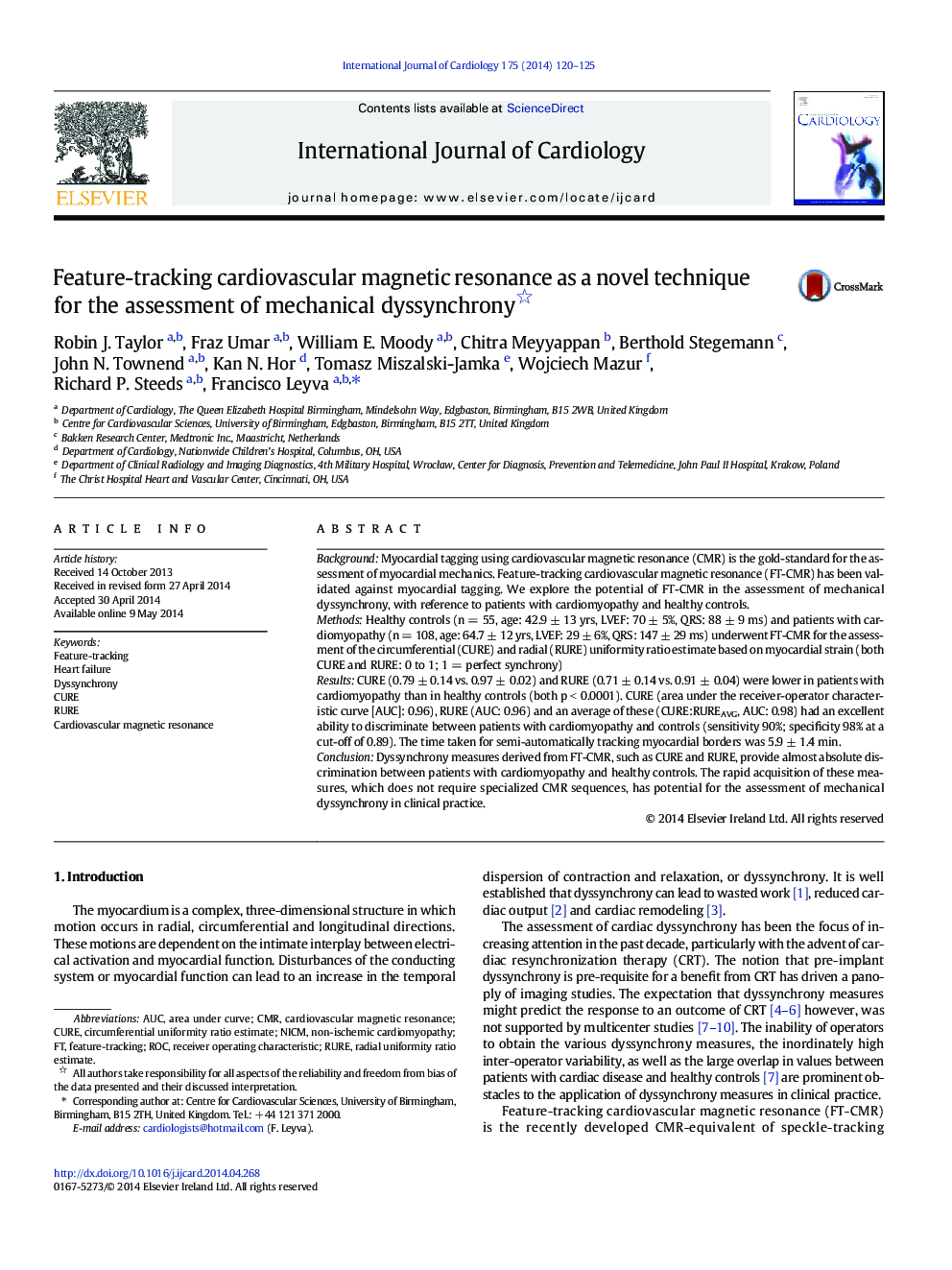| کد مقاله | کد نشریه | سال انتشار | مقاله انگلیسی | نسخه تمام متن |
|---|---|---|---|---|
| 5971238 | 1576183 | 2014 | 6 صفحه PDF | دانلود رایگان |

- We devised dyssynchrony indices calculated from a routine CMR scan.
- Derivation of these indices is rapid and semi-automated.
- These indices accurately discriminate between cardiomyopathic and healthy hearts.
- This has potential for the assessment of mechanical dyssynchrony in clinical practice.
BackgroundMyocardial tagging using cardiovascular magnetic resonance (CMR) is the gold-standard for the assessment of myocardial mechanics. Feature-tracking cardiovascular magnetic resonance (FT-CMR) has been validated against myocardial tagging. We explore the potential of FT-CMR in the assessment of mechanical dyssynchrony, with reference to patients with cardiomyopathy and healthy controls.MethodsHealthy controls (n = 55, age: 42.9 ± 13 yrs, LVEF: 70 ± 5%, QRS: 88 ± 9 ms) and patients with cardiomyopathy (n = 108, age: 64.7 ± 12 yrs, LVEF: 29 ± 6%, QRS: 147 ± 29 ms) underwent FT-CMR for the assessment of the circumferential (CURE) and radial (RURE) uniformity ratio estimate based on myocardial strain (both CURE and RURE: 0 to 1; 1 = perfect synchrony)ResultsCURE (0.79 ± 0.14 vs. 0.97 ± 0.02) and RURE (0.71 ± 0.14 vs. 0.91 ± 0.04) were lower in patients with cardiomyopathy than in healthy controls (both p < 0.0001). CURE (area under the receiver-operator characteristic curve [AUC]: 0.96), RURE (AUC: 0.96) and an average of these (CURE:RUREAVG, AUC: 0.98) had an excellent ability to discriminate between patients with cardiomyopathy and controls (sensitivity 90%; specificity 98% at a cut-off of 0.89). The time taken for semi-automatically tracking myocardial borders was 5.9 ± 1.4 min.ConclusionDyssynchrony measures derived from FT-CMR, such as CURE and RURE, provide almost absolute discrimination between patients with cardiomyopathy and healthy controls. The rapid acquisition of these measures, which does not require specialized CMR sequences, has potential for the assessment of mechanical dyssynchrony in clinical practice.
Journal: International Journal of Cardiology - Volume 175, Issue 1, 15 July 2014, Pages 120-125